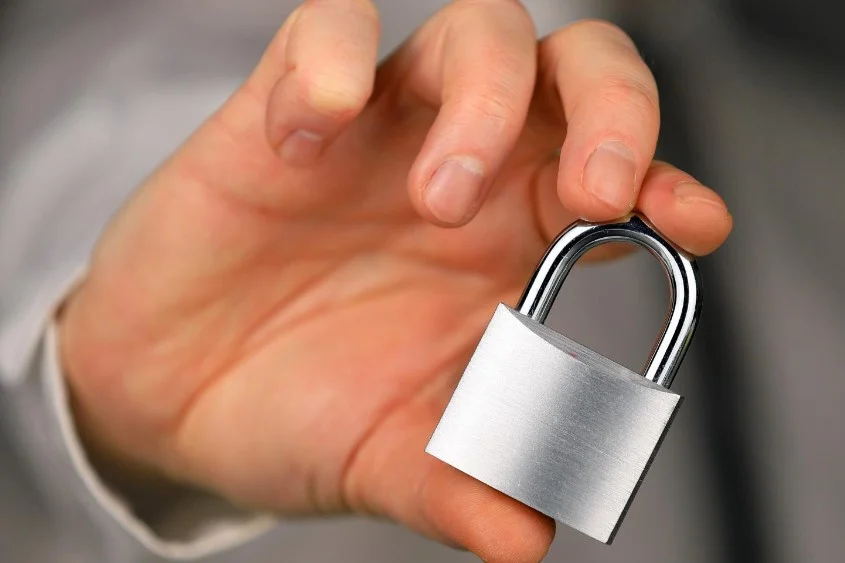Patent vs. Trademark vs. Copyright: Know the Differences and Choose Right
- July 24, 2023
- By Sarita Thomas
- Read 7 minutes
In the dynamic and innovative landscape of modern businesses, protecting intellectual property (IP) rights has become paramount for organizations and individuals alike. Three primary forms of intellectual property protection are patents, trademarks, and copyrights. Each offers distinct benefits and safeguards for specific creations. To ensure the right form of protection for one’s invention, brand, or creative work, it is essential to understand the differences between patents, trademarks, and copyrights. In this article, we will explore these differences in detail and provide statistical data and supporting evidence to help innovators and startups make informed decisions to safeguard their intellectual property assets.
Patents: Safeguarding Innovations
Patents are exclusive rights granted by governments to inventors, providing them with the authority to prevent others from making, using, selling, or importing their inventions without permission. This protection encourages innovation by offering inventors the opportunity to capitalize on their ideas and investments. Patents are typically granted for novel, non-obvious, and useful inventions for a limited period, usually 20 years from the filing date.
Types of Patents
Utility Patents: Utility patents cover new and useful processes, machines, articles of manufacture, and compositions of matter. These patents protect the way an invention works and its functional aspects.
Design Patents: Design patents protect the ornamental features and appearance of a product, rather than its functional aspects. They are crucial for safeguarding unique product designs from unauthorized copying.
Plant Patents: Plant patents pertain to new varieties of plants that are asexually reproduced and distinct from existing plants.
Advantages of Patents
Market Exclusivity: According to a study published in the “Journal of Economics & Management Strategy,” firms with patents enjoy a 50% higher market value compared to non-patenting firms. Patents provide inventors with a monopoly over their inventions, allowing them to control the market and prevent competitors from producing or selling the same invention.
Incentive for Innovation: The World Intellectual Property Organization (WIPO) reports that the number of patent applications worldwide has been steadily increasing, indicating a strong motivation for innovation among inventors. By granting exclusive rights, patents encourage inventors to invest time, effort, and resources into research and development, fostering technological progress.
Revenue Generation: According to the “European Patent Office Annual Report 2021,” patent licensing and technology transfer generate significant revenue for inventors and companies. Patents enable inventors to license their technology to other companies, generating additional revenue streams.
Limitations of Patents
Public Disclosure: The “European Journal of Law and Economics” highlights that the public disclosure requirement of patents may lead to competitors designing around the patented technology once the patent expires.
High Costs and Time-Consuming: The United States Patent and Trademark Office (USPTO) estimates that the average cost of obtaining a patent in the US can range from $10,000 to $50,000. The patent application process can also be time-consuming, especially for complex inventions.
Limited Duration: The World Intellectual Property Indicators 2021 report reveals that patents have a finite lifespan, typically 20 years from the filing date. Once the patent expires, the invention enters the public domain.
Trademarks: Protecting Brand Identity
Trademarks are symbols, names, phrases, designs, or a combination thereof used to distinguish products or services from others in the market. They serve as an essential tool for building brand identity and consumer recognition. Trademark protection ensures that consumers can easily identify the source of products and helps companies maintain their reputation and goodwill. Unlike patents, trademark protection can potentially last indefinitely, as long as the mark is in use and the required renewals are made.
Types of Trademarks
Product Trademarks: These trademarks are affixed to products to distinguish them from competitors’ offerings. They can include brand names, logos, and product packaging designs.
Service Trademarks: Service trademarks are used to identify and distinguish services provided by a company, such as consulting, insurance, or telecommunications.
Advantages of Trademarks
Brand Recognition: According to a survey by the International Trademark Association (INTA), 95% of consumers believe that trademarks create brand recognition and foster trust. Trademarks play a crucial role in establishing brand recognition and fostering customer loyalty.
Legal Protection: The “World Trademark Review” reports that trademark registrations worldwide have been increasing, indicating a growing awareness of the importance of legal protection. Trademark registration provides legal recourse against unauthorized use, counterfeiting, or infringement by competitors.
Market Differentiation: A study published in the “Journal of Marketing” reveals that trademarks contribute significantly to market differentiation. Trademarks allow businesses to stand out in a crowded marketplace by highlighting the unique aspects of their products or services.
Limitations of Trademarks
Limited Scope: Trademarks protect specific types of symbols or names used to identify products or services. They do not safeguard the underlying product or service itself.
Trademark Dilution: According to the United States Patent and Trademark Office (USPTO), if a trademark becomes too generic or loses its distinctiveness due to widespread use, it may lose its protection.
Geographical Limitations: Trademarks are typically limited to specific geographical areas where they are registered and used.
Copyright: Preserving Creative Expression
Copyright protects original works of authorship, including literary, artistic, musical, and dramatic creations. This form of protection allows creators to control how their work is used, reproduced, distributed, performed, or displayed. Copyrights offer automatic protection upon creation, and registration is not required for enforcement, although it is advisable to register to facilitate legal action and claim statutory damages in infringement cases.
Types of Works Protected by Copyright
Literary Works: Books, articles, and written content fall under this category.
Visual Arts: Paintings, photographs, sculptures, and graphic designs are protected as visual arts.
Music: Musical compositions and sound recordings are eligible for copyright protection.
Films and Audiovisual Works: Movies, videos, and multimedia presentations receive copyright protection.
Advantages of Copyright
Creator’s Control: The “Journal of Intellectual Property Law & Practice” states that copyright provides creators with control over how their work is used and distributed, safeguarding their creative integrity.
Economic Benefits: According to the “International Journal of Economics and Management Sciences,” copyright owners have been able to generate significant economic benefits by licensing their works for various uses. Creators can license their works to others, generating income from their creations.
International Protection: Copyright is recognized in most countries under international treaties, offering global protection.
Limitations of Copyright
Fair Use Doctrine: Copyright law allows for fair use of copyrighted material for purposes such as criticism, comment, news reporting, teaching, and research, without seeking permission from the copyright holder.
Duration Limits: The World Intellectual Property Indicators 2021 report reveals that copyright protection is limited to the life of the author plus 70 years in most cases. After expiration, the work enters the public domain.
Idea vs. Expression: The United States Copyright Office clarifies that copyright protects the expression of ideas, not the ideas themselves. Concepts and facts are not subject to copyright protection.
Choosing the Right Form of Protection
Determining the most appropriate form of protection depends on the nature of the creation and the desired outcomes. Here are some guidelines to help innovators and startups make the right choice:
Inventions and Technological Innovations
For novel and functional inventions, a patent is the appropriate choice. Utility patents safeguard the way an invention works, design patents protect its appearance, and plant patents are suitable for new plant varieties.
Branding and Product Identity
For brand names, logos, and other symbols associated with products or services, trademark protection is essential. Trademarks help establish brand recognition, build consumer trust, and protect the distinctiveness of a company’s offerings.
Creative Works and Artistic Expression
Copyright protection is crucial for safeguarding literary works, visual arts, music, films, and other creative expressions. Creators can control how their works are used and licensed, ensuring their economic and artistic rights are preserved.
Safeguarding Intellectual Assets
Patents, trademarks, and copyrights serve distinct purposes in protecting various forms of intellectual property. Patents shield innovations and inventions, trademarks protect brand identity and product recognition, while copyrights preserve creative expressions and artistic works. Understanding these differences, backed by statistical data and supporting evidence, is crucial for making informed decisions and ensuring the proper protection of intellectual property assets.
For businesses and individuals seeking comprehensive and reliable patent services, it is essential to find reputable and experienced service providers in the field. Expert companies like Maxinov in the patent search, patent drafting, patent intelligence, and patent analytics domain can significantly assist innovators and startups in securing and safeguarding their intellectual property.
While choosing the right form of intellectual property protection is essential, investing in professional services can be the key to unlocking the full potential of your innovations and creative works. As you embark on your intellectual property journey, consider exploring the range of services offered by specialized companies in the industry to maximize the value of your intellectual assets.
Sarita Thomas
Latest Blogs
Blog Categories
- Intellectual Property (IP) Strategy (84)
- Intellectual Property Asset Management (IPAM) (17)
- IP Monetization (4)
- IP News (7)
- Patent Drafting (2)
- Patent Litigation (6)
- Patent Prosecution (8)
- Patenting (18)









No comment yet, add your voice below!